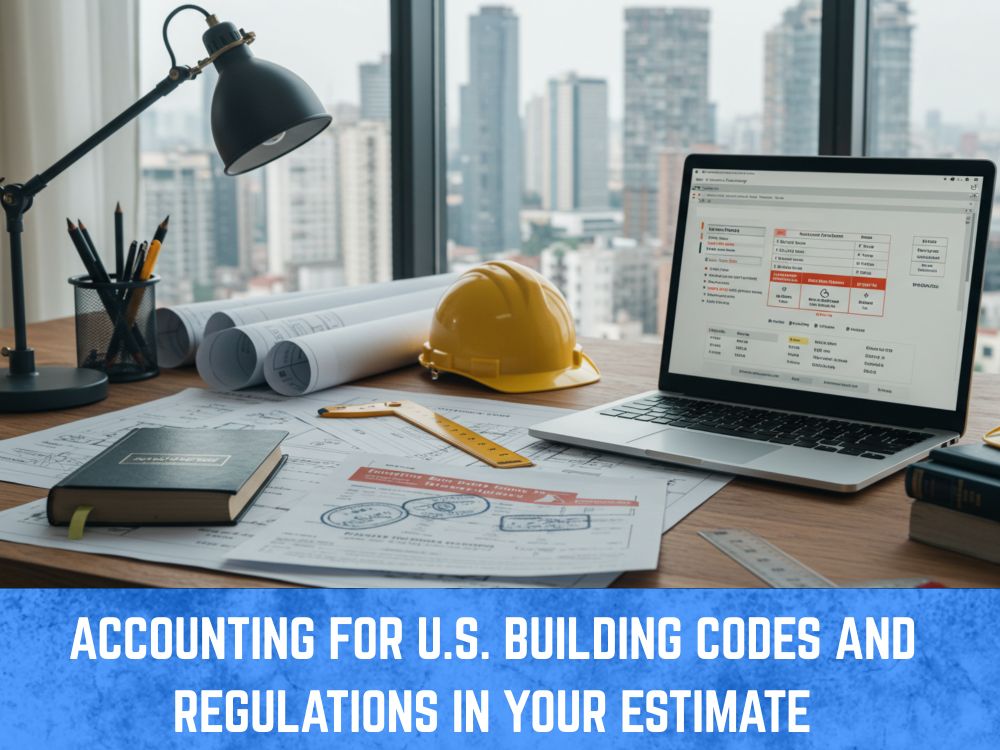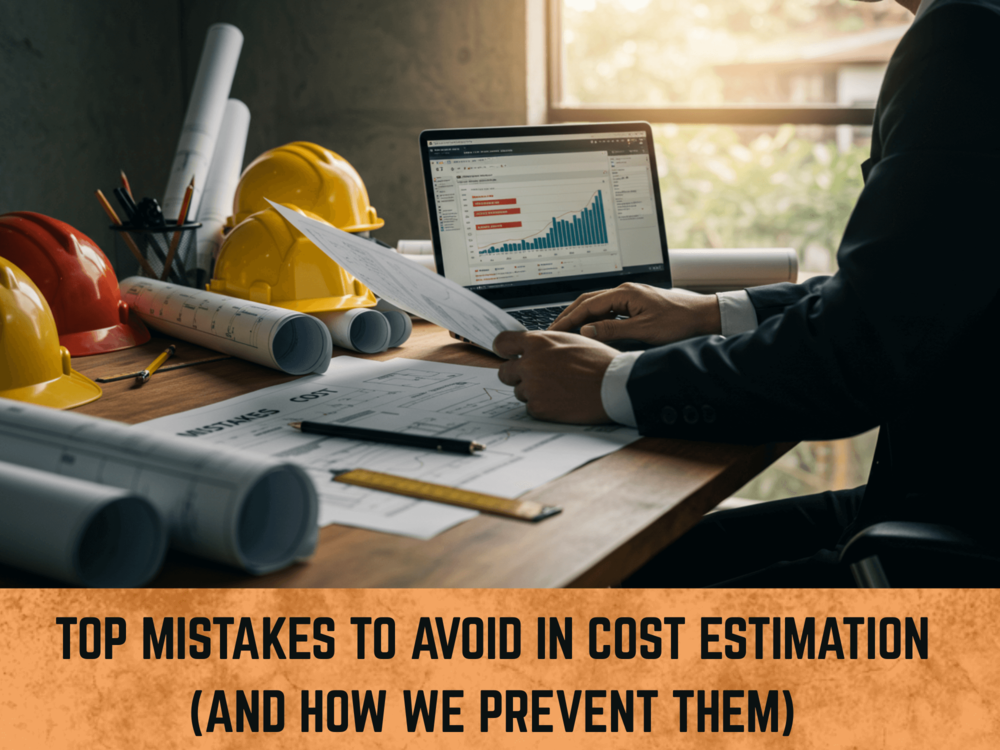For any construction project, an accurate estimate is a contractor’s most valuable tool. However, a common and often devastating mistake is to underestimate the financial impact of building codes and regulations. These complex rules—put in place to ensure safety, structural integrity, and sustainability—are not merely a bureaucratic hurdle; they are a significant and often costly line item in a project’s budget. Failing to properly account for them can lead to project delays, expensive rework, fines, and even legal complications.
To maintain a profitable business and a stellar reputation, every contractor must master the art of factoring the full cost of compliance into every construction estimate.
1. Navigating the Complex Regulatory Landscape
The first, and most crucial, step is to understand the layers of regulations that govern your project. U.S. building codes are a complex mix of national, state, and local requirements, and they are constantly evolving.
- National Codes: The International Building Code (IBC) and International Residential Code (IRC) are the foundation for most construction projects. However, it’s rare for them to be adopted in their original form.
- State-Level Amendments: Most states adopt the national codes but add specific amendments tailored to their unique needs. For example, states in seismic zones have stringent earthquake resistance requirements, while others have strict energy-efficiency standards (such as California’s Title 24 or the requirements of the IECC – International Energy Conservation Code).
- Local Ordinances: The most granular and often most impactful rules come from local municipalities. Cities and counties have their own zoning laws, historical preservation ordinances, accessibility requirements (like those from the ADA – Americans with Disabilities Act), and fire codes. A local ordinance might mandate a specific type of fire-rated gypsum board for a multifamily dwelling or require specific stormwater management systems for a commercial development.
The “Authority Having Jurisdiction” (AHJ)—the local building department or code enforcement office—is the final authority. Engaging with them early in the planning phase can provide clarity and prevent expensive missteps.
2. Identifying the Direct Costs of Compliance
Many of the costs associated with compliance are direct and can be calculated with a high degree of precision. These should be listed as separate line items in your estimate to ensure transparency and prevent confusion.
- Permit and Application Fees: This is the most straightforward direct cost. Permits are required for nearly every aspect of a project, including:
- Building permits
- Demolition permits
- Electrical permits
- Plumbing and Mechanical permits
- Utility connection fees
- Zoning variance applications
These fees vary widely based on the project’s valuation, size, and location.
- Mandatory Materials and Equipment: Codes often mandate the use of specific, and sometimes more expensive, materials that meet certain safety, structural, or environmental standards. For example:
- Specific R-values for insulation to meet energy codes.
- High-efficiency HVAC systems and water heaters.
- Fire-rated drywall or doors in commercial or multi-family buildings.
- Specialized wiring or conduits for electrical systems.
These are non-negotiable costs that must be researched and included in your material takeoff.
- Inspections and Testing Fees: Throughout the construction process, independent third-party inspections are a requirement. You will incur fees for:
- Foundation and footing inspections.
- Framing inspections.
- Rough-in plumbing, electrical, and HVAC inspections.
- Final occupancy inspections.
In addition, specific tests, such as soil compaction, concrete strength, or moisture tests, are often mandated, each with its own associated cost.
3. Uncovering the Hidden and Indirect Costs
While direct costs are easier to track, the indirect costs of compliance can be just as damaging to a budget if they are overlooked. These costs are often tied to project delays and unforeseen complications.
- Rework and Re-Inspection Fees: This is one of the most common and expensive hidden costs. If an inspector finds that work does not meet code, you will have to pay for the labor and materials to correct the issue—and then pay for a re-inspection. A single failed inspection can lead to days of delay and thousands of dollars in extra costs, not to mention the hit to your reputation.
- Project Delays: Navigating the permit application and approval process can take weeks or even months. Any hold-up can throw off your entire project timeline, incurring significant costs for extended equipment rental, project management overhead, and potential liquidated damages if you miss a contractual deadline. The cost of labor and equipment sitting idle on-site can quickly erode profits.
- Increased Professional Expertise: Complex projects often require the services of a professional engineer, a licensed architect, or a specialized code consultant to ensure the design meets all requirements. Their fees, while a cost, are a critical investment that saves money in the long run by preventing costly mistakes and rejections.
- Litigation and Fines: The worst-case scenario is non-compliance leading to fines, stop-work orders, or legal action from the AHJ or a disgruntled client. These costs are unpredictable but can be financially devastating.
4. The Value of Proactive Compliance
Instead of viewing compliance as a burden, smart contractors see it as a strategic asset. A proactive approach not only helps you avoid a host of problems but also enhances your business reputation and ensures a safer, higher-quality final product.
- Enhanced Safety: Codes are designed to protect occupants and workers. By strictly adhering to them, you reduce the risk of accidents, structural failures, and other liabilities.
- Improved Reputation: A project that is completed on time and passes all inspections on the first try speaks volumes about your company’s professionalism and attention to detail. This builds trust with clients and leads to more business.
- Avoidance of Legal and Financial Risk: By eliminating the risk of fines, stop-work orders, and potential lawsuits, you protect your business’s financial stability and longevity.
A Modern Approach to Compliance Accounting
To effectively manage these costs, you need a proactive, integrated approach that makes compliance a core part of your project estimation and execution.
- Start Early: Do your due diligence and contact the AHJ early in the project. Ask about specific requirements, especially for unique project types. A pre-submittal meeting can save weeks of back-and-forth later.
- Leverage Digital Tools: Modern cost estimation and project management software can be a game-changer. Use them to create a master checklist of all required permits and inspections. You can attach digital copies of relevant code sections to specific tasks, ensuring that your team in the field has instant access to the information they need.
- Build a Contingency: Even with the most meticulous planning, unforeseen issues can arise. It’s wise to build a contingency into your estimate—a percentage of the total budget—specifically to account for potential compliance-related risks. A typical contingency might be between 5-10% for a standard project.
- Educate Your Team: Ensure that everyone from project managers to on-site supervisors is aware of the key compliance requirements. An educated team is your best defense against errors that lead to costly rework.
By treating the cost of compliance as an integral part of your budget—not a separate, optional expense—you ensure that your estimates are accurate, your projects stay on track, and your business remains financially sound and reputable.




